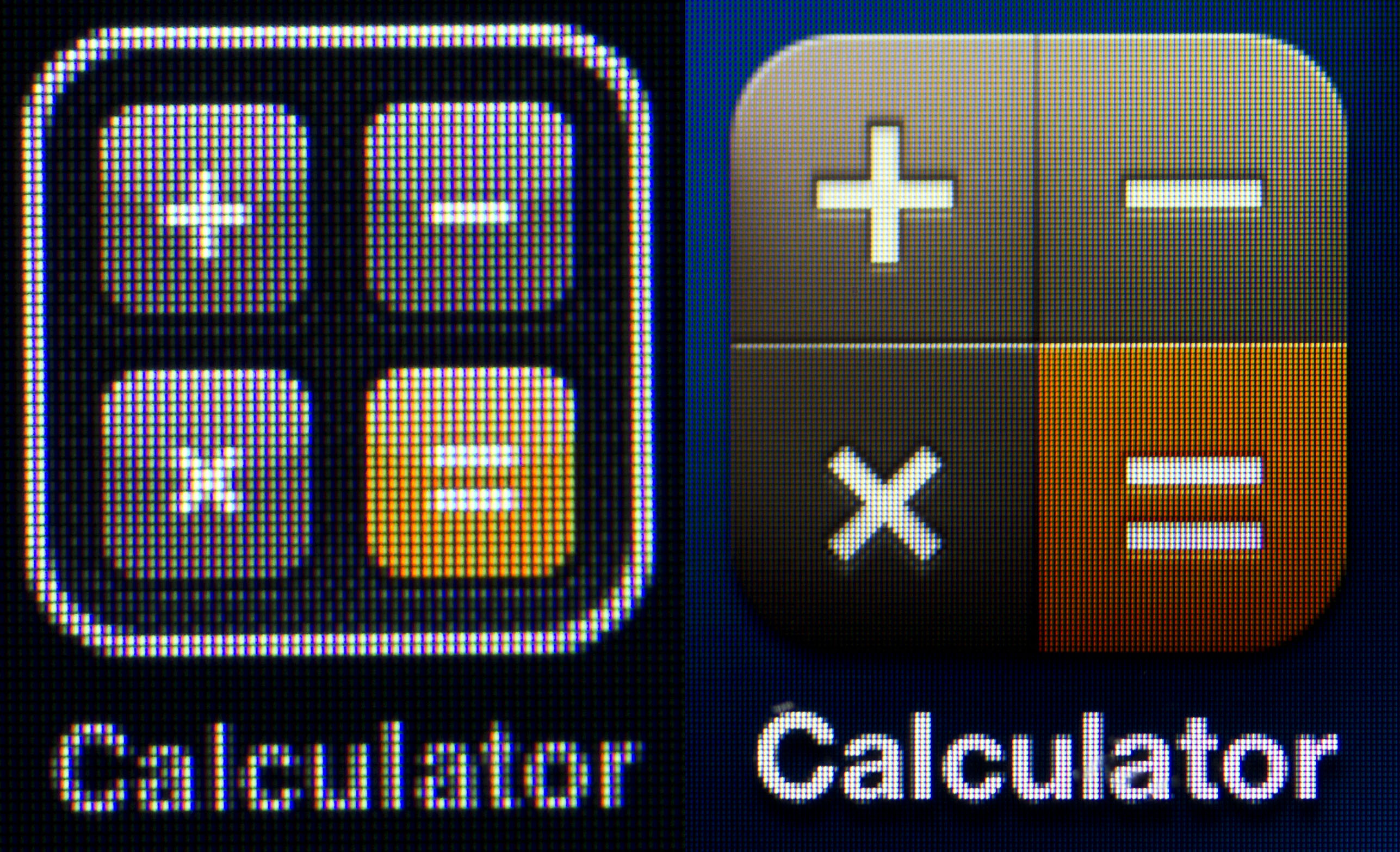Steve Jobs discussed that this has 4x the number of pixels over the previous generation and we haven't seen anything like it and Steve doesn't think this kind of display wouldn't be surpassed anytime soon. However, with the new technologies the other manufacturers have been making, this "Retina" display has already been exceeded not too long ago.
Let's take a short recap, the iPhone 4 was the first smartphone ever to have this kind of high-resolution display. One way of knowing (if it is in high-resolution) is to calculate its 'ppi' which stands "Pixels per inch". PPI refers to the numbers of pixels spread across the surface area of the screen, but because screens are measured diagonally it's not as straightforward as multiplying the pixel count going across the device by the number down and then dividing by the diagonal measurement.
I am not going to bore you with any math so I did a little research for a PPI calculator online.
 |
| iPhone 4 with its incredible Retina display |
The iPhone 4 which has a resolution of 960x640 (Horizontal by Vertical) and a 3.5 inches screen has 329.65 ppi. The number isn't quite surprising let it be said that all human being has this 'magic' number in which until the retina (part of the eye) can't decern the number of pixels (Steve Job's explanation). This then makes the display crystal-clear and sharp. Everything is just so smooth. In comparison, the previous generation iPhone (3GS) has a resolution of 320x480 which renders 164 ppi (Too low for todays standards).
So what's in the retina display that makes individual characters/images absurdly smooth?

It lies in the pixels-per-inch. In the example on the left, the overall box represents an Inch of a screen. The box inside of it represents a single pixel. If you were to type a . (dot) on your device, a 10ppi would give you a choppy, and jagged edges. Which is blurry and can stress your eyes. The 20ppi on the right is much smoother (the dot is much discernible) from your typical viewing distance.
 |
| Comparison of the iPhone 3GS (left) and the iPhone 4 (right). |
So would it make sense to buy a 300ppi HDTV?
Your typical Full HD 1080p 23" LED TV would have 95ppi. But the ppi count doesn't matter (in TV's)! No one would ever watch 20 inches away from the set. Typical viewing distance varies from screen size to screen size so a 300ppi at 60" LED TV would be a no-brainer as your eyes couldn't even identify the pixels at the typical viewing distance of a 60" LED TV. Buying a high-resolution display (ppi count) would only make sense on portable devices (i.e Smartphones/Tablets/Laptops). So the answer's no.
Is the 300ppi the worlds highest ppi count?
No. As I mentioned on the headline, it was already surpassed by the other manufacturers not too long ago. Smartphones like the Samsung Galaxy S4 (1920x1080 @ 5') has 441ppi.
Does ppi matter?
Yes but anything more than 400 is overkill. Your eyes can't see the high concentration of pixels at normal (smartphone) viewing distances. Your naked eye is able to see only up to around 300 (As what Steve implied, however some criticized about this theory of his in which it was proved wrong). You won't be able to tell the difference between a device with a ppi of 400 and 440.
Images courtesy of:
scaredpoet.com
knowyourmobile.com
gawkerassets.com
.png)


No comments:
Post a Comment